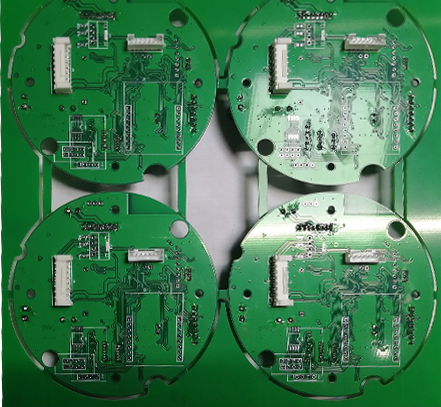The size of terminal equipment continues to decrease to meet the needs of users for portability, but the board-level functions are becoming more and more complex, and there are more and more high-speed signal applications, so that the PCB space is becoming more and more crowded. The above-mentioned electronic products require small PCBs in multiple development directions. change. The method of reducing PCB size, or improving PCB "integration", can usually be subdivided into the following three methods: increasing the number of layers, reducing the line width and line spacing and aperture diameter, and using new materials.
PCB (Printed Circuit Board) has become a leading industry in Asia Pacific, especially Chinese companies.
According to data from the International Electronics Industry Connection Association (IPC), the PCB production capacity of Greater China accounted for 63.6% of the world in 2017 (including 52.7% of the mainland). If South Korea and Japan are added, East Asia accounts for more than 80% of the global PCB production capacity.
PCB has gradually become a sunset industry in Europe and the United States, and the overall trend is declining. However, a PCB company headquartered in the United States has been focusing on the PCB industry in recent years, and it has a good momentum. 10%, sales of more than 2.8 billion US dollars, and when the electronics industry is expected to be pessimistic, said that the company still expects to achieve positive growth in 2019.

Although it does not have a cost advantage, Schindler Technology has performed well in the high value-added market of PCBs, especially in the application markets of communications, national defense, automotive, medical and industrial applications. According to data from the PCB market research organization Prismark, in the communications PCB market, Schindler Technology topped the list in 2017 and was the only Chinese manufacturer among the top five manufacturers.
In the semiconductor field, there is Moore’s Law. The number of integrated transistors per unit area doubles every 24 months. Long trend), which means that the size of a single transistor is reduced and the overall integration of the chip is improved. Although the PCB industry's demand for size reduction is not as extreme as the semiconductor industry, it also continues to put forward higher requirements with the development of the electronics industry. Personal computing devices have evolved from desktops to notebooks, and then to tablets and mobile phones. The size of the devices has been reduced by orders of magnitude. The increase in chip integration has played a leading role, but the reduction in PCB size and the increase in wiring density are also important auxiliary approaches.
Faced with questions from TechSugar, Edman said that there are two main trends in the development of PCB technology. The first trend is the ongoing miniaturization. The size of terminal equipment continues to decrease to meet the needs of users for portability, but the board-level functions are becoming more and more complex, and there are more and more high-speed signal applications, so that the PCB space is becoming more and more crowded. The above-mentioned electronic products require small PCBs in multiple development directions. change. The method of reducing PCB size, or improving PCB "integration", can usually be subdivided into the following three methods: increasing the number of layers, reducing the line width and line spacing and aperture diameter, and using new materials.
The combination of hardware and software is a hot spot in the current market. Use ultra-thin flexible circuit tape to connect multiple printed circuit board components and other components (such as display, input or memory, etc.) without wires, cables or connectors. The flexible circuit board is used as the supporting carrier for the circuits required for connection between the various multilayer rigid circuit board modules in the flexible and hard printed circuit board module as required.
Compared with the standard PCB combination using separate cables and connectors, the mean time between failures (MTBF) of the rigid-flex board is usually longer. This flexible board and rigid-flex board of Schindler Technology are widely used in satellites and military applications. Aircraft and missile platforms, various medical and health equipment, and different scientific and industrial applications.
PCB and smart manufacturing
Intelligent manufacturing and Industry 4.0 are hot topics today. Leading manufacturers like Schindler Technology naturally need to think about how to bring the PCB manufacturing industry into an era of intelligent manufacturing with smarter processes, traceable quality, and high production efficiency. Edelman said that the PCB smart factory is not just an IT strategy, not just automated manufacturing. The PCB smart factory must be able to achieve real-time visibility of process control and fully controllable production factors to meet PCB manufacturers and customers' environmental, technology, quality, and production capacity., Cost benefit, and all requirements for data tracking.
However, traditional PCB production lines face many difficulties when developing into smart factories. For example, traditional PCB production line equipment is usually not connected to the Internet, and the suppliers of different links are different, it is difficult to interconnect and communicate between the equipment, the industry also lacks a unified equipment communication standard, and the traceability of the production process is poor. The MES system of the PCB industry is primitive and rough. Compared with semiconductor or panel manufacturing, PCB equipment has a low degree of automation and more manual operations. In addition, PCB manufacturing has a relatively low gross profit rate. Therefore, it is stretched in equipment investment and needs to enter Industry 4.0. It is not easy.